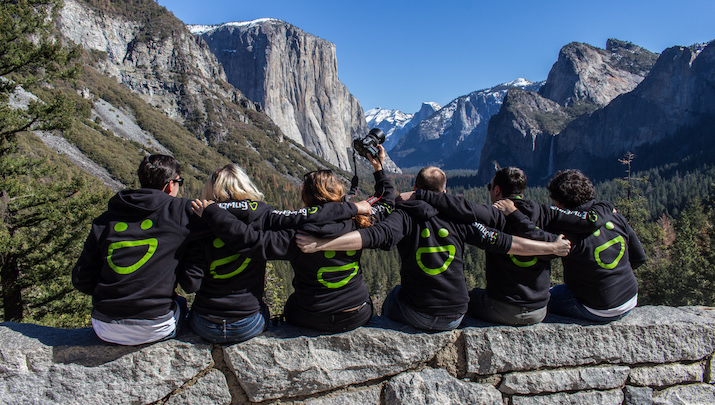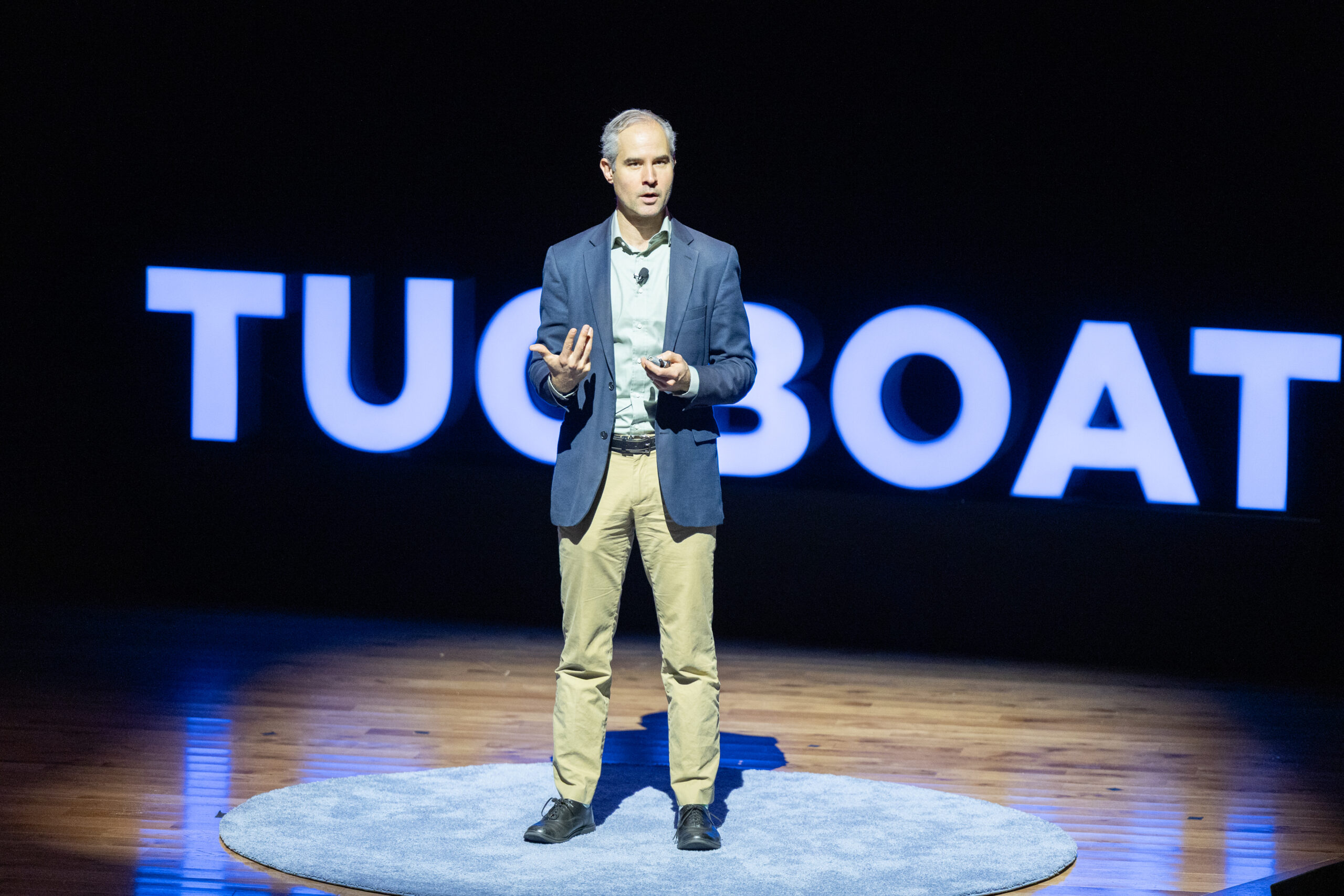

Defying Conventional Wisdom 17 Years Ago Put Our Evergreen Business Ahead
- Ben MacAskill
- SmugMug + Flickr
[A note from Tugboat Institute: This week, we are publishing an article written before the COVID pandemic. Please note the author’s postscript at the end of this article, in which he comments on the connection of this topic to the impact of the pandemic.]
When we launched our Evergreen® business, SmugMug, an online, subscription-based photo sharing and hosting service, we had no idea our business model was innovative. We knew it was logical, that it felt like the right thing to do, and that it solved a problem for our customers. For us, those were the key factors. We only realized later that the idea was a Pragmatic Innovation that would make us the first online consumer subscription service.
Really, this innovation was born of necessity. From day one, we had an uncompromising commitment to our customers, and we didn’t see another model that would allow us to put their needs first.
When we launched SmugMug in 2002, existing photo-sharing services were ad-based: they provided storage and sharing capabilities for their customers for free, but photos were presented alongside advertising. In this scenario, the customer might be viewing his or her family photos from a recent trip to Disneyland alongside ads for any variety of products or services that didn’t necessarily shout “family-friendly.” They had no control over how their photos were positioned. And, because that “free” storage was often supported by sales of prints or other products, customers found that if they didn’t purchase prints or use other services offered by the provider, their photos could be taken down and lost forever.
In fact, one of these “free” services lost some of our family photos. As avid photographers, this felt personal. We didn’t like ads presented against our photos, and we didn’t like the idea that our irreplaceable photos that created a treasured timeline of our lives were held hostage and could be erased forever at any time.
We got to thinking about an alternative model. How could we create a sustainable business that prioritized our customers and their photos? Ultimately, we landed on the only solution that seemed it could work: We would ask customers to actually pay what it cost to put their photos online.
Today, that concept hardly seems revolutionary. But in 2002, the mantra was, “it’s all about the eyeballs,” and no one paid for any online service. The dogma of the day was that everything online should be free to attract the greatest number of users, and it would be more than a decade before that really shifted in online consumer services.
There’s no doubt that we were outliers. All but one analyst told us that our concept just wouldn’t work. But we still felt the business had potential. And we felt that the only way we’d really know if customers would value our services was to ask them pay up front. We figured that it was a pretty simple test: If they weren’t willing to pull out their credit cards, then we didn’t actually have a viable business.
But they did. Without ever having used our service or even necessarily knowing what it offered, customers entered their credit card numbers on day one and signed up for SmugMug because they wanted a better photo sharing and storage service.
From that first day and that first subscription payment, we felt a profound responsibility to our customers. Given people had myriad free options—from some of the most trusted names in photography—the immediate expectation was that if SmugMug was charging a fee, they must be offering something exceptional. We accepted this higher expectation, and we made a commitment to take care of customers and their memories with unrelenting focus.
With that self-imposed mandate, we invested heavily in customer service and very quickly learned that our dedication to our customers was a differentiator. They felt they knew us personally. They trusted us, and we honored that trust by listening to them and responding to their requests. We ensured they had unlimited storage and beautiful galleries to share; we built what is now commonly known as “enterprise-level” access controls, providing customers the ability to manage their audience and secure their privacy. We grew and innovated based on our customers’ needs.
Now, 17 years later, we continue to be laser-focused on our subscribers. As a private, Evergreen business with a long-term view, we’ve never paid close attention to our competitors, instead, we focus on what are our customers are asking for and how we can deliver that. Rather than being distracted by the next bright, shiny object, we are committed to delivering customer value. And, we still feel that we can best deliver that value through the subscription model that, while no longer a brave new innovation in our space, remains our strength.
In fact, when we acquired photo and video sharing service Flickr in 2018, we doubled down on our commitment to the subscription model. Flickr already had some subscription models, but they were losing a lot of money. We immediately began to work on aligning and improving their model so customers would see the value and be happy to pay for our services.
While serving our customers through our subscription service remains our core offering, we have also responded to their requests for complementary products that allow them to share their photos in other ways. We developed a line of business selling prints, photo books, and gifts, thereby providing ourselves some revenue diversification and additional value to the customers. But even with that money coming in, we view ourselves as a subscription service first because the product sales come and go based on whether we have happy, paying subscribers.
As a family-owned Evergreen business, when we reflect on the company we have built over the past 17 years, there’s no better indication of the value of our subscription service than scrolling through our own SmugMug photo galleries. Like our first customers, I started storing my photos on our platform in 2002. I have photos of my first date with my wife, of our wedding, and of the births of our kids—among many, many other memories. We keenly feel our obligation to continue to put our customers first, to keep their photos safe. As we continue to grow and build our company, it is with that intimate understanding of the the memories that we are keeping that we move ahead.
And, as a final note, I should tell you that our unconventional approach had the additional benefit of not requiring that we raise outside capital. In fact, our original and only investment was $20.
Postscript: As the global economy shifted overnight with the pandemic, our decision to orient our business with our customers is continuing to prove valuable. Advertising revenue has significantly shrunk across the industry, and partnerships and sales are hard to come by while so many companies are struggling. Our customers, however, continue to demonstrate that their photos and our platforms are important in their life. We haven’t escaped impact, but it’s far less than many others with different business models are struggling with.
Ben MacAskill is President and COO of SmugMug + Flickr.
Photo credit: Aaron Meyers
More Articles and Videos

Leading Through Uncertainty – Tugboat Institute® Summit 2025
- Jackie Hawkins
- Tugboat Institute

Why Employees Quit and How to Use Evergreen® Principles to Keep Them
- Michael Horn
- Clayton Christensen Center for Disruptive Innovation

Get Evergreen insight and wisdom delivered to your inbox every week
By signing up, you understand and agree that we will store, process and manage your personal information according to our Privacy Policy




